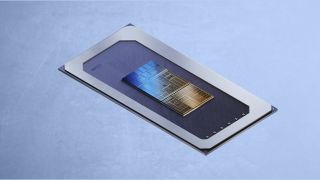Intel Wildcat Lake CPU tooling surfaces in shipping manifests — reportedly adopts next-gen Cougar Cove and Darkmont cores, Intel 18A node
A massive step up from Alder Lake.

As CPU enthusiasts anticipate Intel's Panther Lake CPUs next year, the firm is likely working on several other undisclosed projects. One of them is Wildcat Lake, allegedly succeeding the Alder Lake-N "Intel Processor" lineup, catering to the lightweight laptop and mini-PC market (via x86deadandback). While we don't have more information than a few shipping manifests detailing the BGA socket type and CPUID, expect these processors to arrive sometime in 2025.
Intel's current product segmentation positions Lunar Lake as a unique, one-off design to eclipse the competition in efficiency while delivering solid performance. Conversely, Panther Lake-H will succeed Arrow Lake-H, making it hard to pinpoint Wildcat Lake's placement in Intel's mobile roadmap. Architecturally, its design is rumored to employ a P+LPE core combination, similar to Lunar Lake. However, other sources hint that Wildcat Lake resembles Alder Lake-N or the now-abandoned Pentium and Celeron series. These CPUs are used in thin Chromebooks, embedded devices, NAS, and home servers, you name it. If true, this will be quite the leap for the mini-PC market, considering Alder Lake's age.
The shipments appear to have slipped under our radar, dating back to October 30 this year. The listings mention CPU reball jigs or reballing stations for the BGA 1516 socket, measuring 35 x 25 mm, the same socket that supports these new Wildcat Lake processors. This is likely to prep these CPUs for RVPs (Reference Validation Platforms) by applying solder balls at the underside of the chip.
Intel WILDCAT LAKE Socket Founded!BGA 1516 = 35mm*25mm: pic.twitter.com/sw7t02JCpjDecember 18, 2024
It is too early to speculate about Wildcat Lake's specifications, as it is probably still in early development. Still, the chips are expected to be fabricated using the 18A process. Likewise, Panther Lake, also built on 18A, has ES0 samples ready with eight OEMs per Intel. This development is a significant boost for Intel Foundry since at least two products on its flagship node are most probably undergoing validation as we speak.
Furthermore, speculation abounds that Wildcat Lake features next-gen Cougar Cove P-cores and Darkmont LPE-cores in a 2P+4LPE configuration. This unconventional core layout likely means that the P and LPE cores don't share a ring bus, mirroring Lunar Lake.
A significant selling point behind Lunar Lake is Xe2. While Intel is already working on Xe4, we might not see Xe3 (Celestial) before late 2025 or even 2026. This, coupled with the absence of two P-cores, makes Wildcat Lake highly unlikely to supersede Lunar Lake, but it may be well-suited for the sub-10W segment.
Stay On the Cutting Edge: Get the Tom's Hardware Newsletter
Get Tom's Hardware's best news and in-depth reviews, straight to your inbox.

Hassam Nasir is a die-hard hardware enthusiast with years of experience as a tech editor and writer, focusing on detailed CPU comparisons and general hardware news. When he’s not working, you’ll find him bending tubes for his ever-evolving custom water-loop gaming rig or benchmarking the latest CPUs and GPUs just for fun.
-
subspruce Reply
The Intel N330 would already be a big upgradeMama Changa said:Would be nice in a tablet like Surface GO replacement, which is currently trash.
Most Popular


